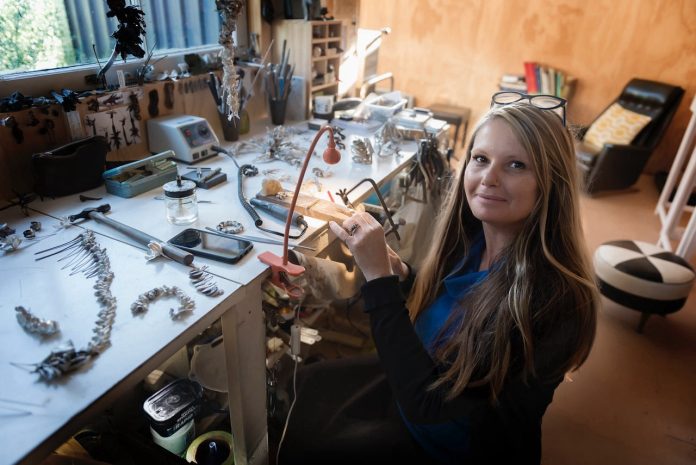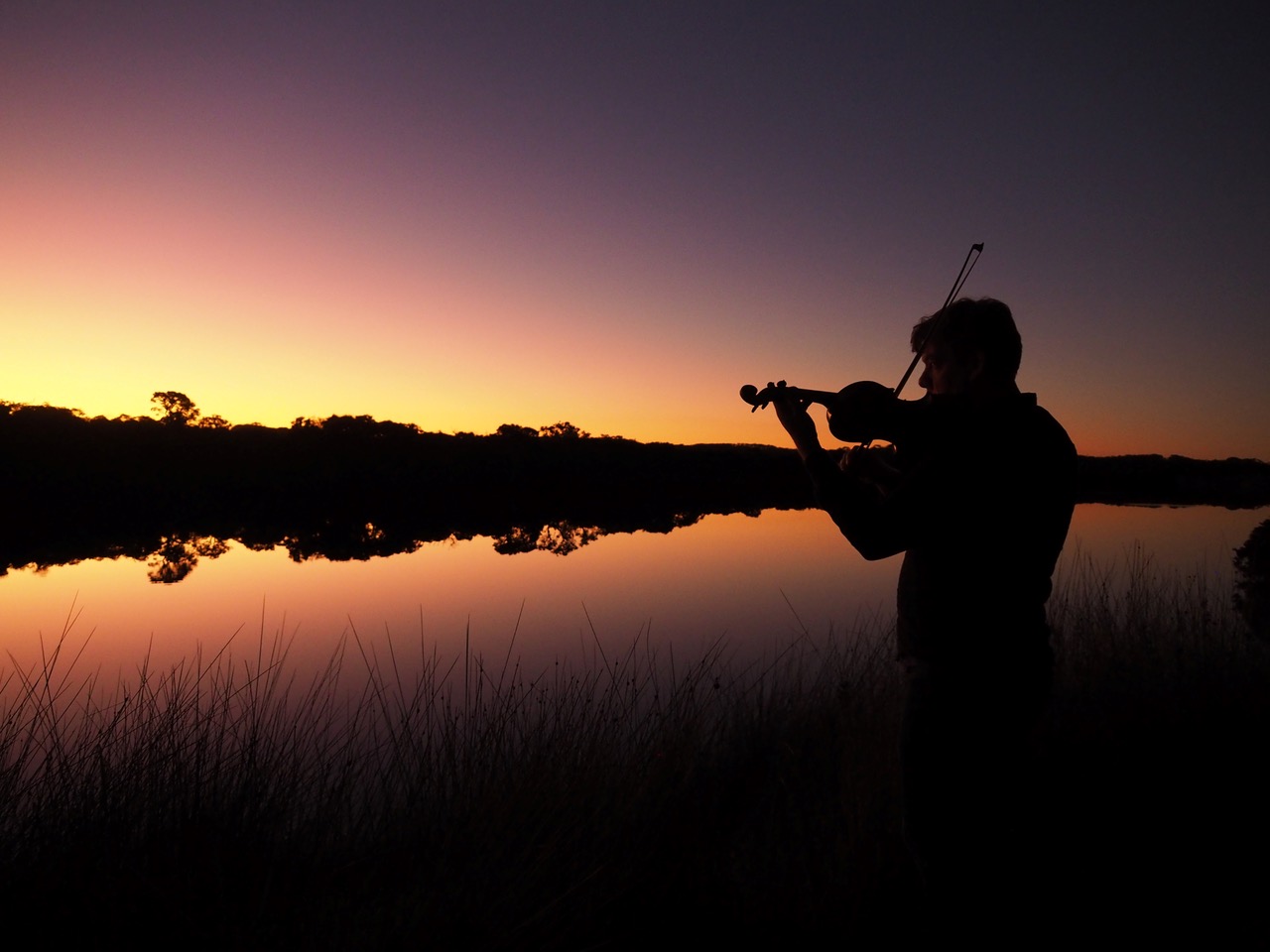In a North Perth backyard Melissa Cameron has created a large-scale work from galvanised steel salvaged from her demolished garden shed to include in the upcoming inaugural Indian Ocean Craft Triennial (IOTA21). The new Perth arts festival aims to celebrate and highlight the talents of skilled craftspeople in the region.
IOTA21 is an international exhibition of significant works by 35 artists from WA, NSW, India, Kenya, South Africa, Malaysia, Thailand and Singapore, to be held at Fremantle Arts Centre and John Curtin Gallery from September to November.
Another 30 or more exhibitions and activities are presented by major institutions, galleries and art spaces in collaboration with craft artists and craft-specific groups. All demonstrate how the practices associated with crafting materials such as clay, glass, fibre, wood and metal are shared across cultures.
Cameron’s 4.2m high work, created in response to the destruction of the Juukan Gorge rock shelters, called for around 1000 hours of hand-cutting and sawing tough metal, a far cry from her usual work creating jewellery. The challenge also was to transport the work to the John Curtin Gallery for the exhibition.
Another artist, Lombadina-based Darrell Sibosado made 2000 fish from carved pearl shell, assisted by his nephew, also Darrell.
“The exhibition idea was sparked when Garland, an online magazine, launched an issue focusing on WA artists looking out to the Indian Ocean,” said festival co-ordinator Carola Akindele-Obe. “A bunch of us thought it would be good to get together and do more things like this. Some of us had been involved in startups that focus on promoting quality WA craft.
“One of these was Jude van der Merwe who had completed a research report in 2015 about mapping the craft sector in WA. She contacted Maggie Baxter, who had worked with artisans in India for many years, and they came up with the idea of an international craft exhibition. They approached me to join in too – and I enthusiastically, possibly unwittingly, agreed to assist.
“We approached Fremantle Arts Centre and John Curtin Gallery and they loved the idea, so we put feelers out, bringing in Chad Creighton from the Aboriginal Art Centre Hub as an Indigenous adviser, Gerald Sanyangore, originally from Zimbabwe, and Qassim Saad, a lecturer at the School of Design and Built Environment at Curtin University.
“It was quite a diverse group. We set up a partnership and went from there. After some research, we started to travel to seek extraordinary craftspeople, and then Covid hit, which changed everything.
“There are 35 international and Australian artists exhibiting across two venues, with the artists supported by several hundred craft artisans. Most of the works have been specially made for the triennial, but many artists can’t attend so we have made every effort to make sure we bring their works here.
“We are organising some Zoom hook-ups so artists can talk about their works. Fingers are crossed there will not be any more lockdowns. Logistically it has been a big exercise getting works to Perth.
“We are a small group of voluntary founding curators and project directors. We are not an established organisation, just a partnership created to present the exhibition, now a festival. We didn’t have a shipping and freight partner, so we’ve had to learn international art freight from the ground up.
“There have been challenges as some works are created in remote locations. For example, some fantastic woven mats created on an island off Sabah in Borneo. The weavers were in lockdown and couldn’t get their works off the island.
“The artists taking part in the triennial, range from internationally famous artists to traditional artisans working with artists and designers, but they all make works using craft practices. During Covid there has been a big resurgence in home craft from knitting to crochet, recycling and repurposing.
“It has been fantastic to see this. When they do so, people gain an appreciation of master crafts people, taking craft to another level.”
Akindele-Obe says craft aspects reach further than people might think – for example into fast fashion, sustainability and economics. A conference during the opening days of the event will discuss some of these big issues, at Fremantle’s Maritime Museum and Curtin University with a fashion parade at Boola Bardip, the WA Museum.
“We had hoped international artists would visit Perth and work collaboratively with local artists, but realised last year this would not happen. So, for example, we have two artists from South Africa, Andile Dyalvane and Zizipho Poswa, working with fibre weaver, Fiona Gavino, here in Perth, based on conversations through Zoom.
“People can pick up an IOTA21 festival guide (or browse the online program) and choose specific venues where exhibits involve minute stitching to metalwork, woodwork and weaving. Embedded in these works are stories of our times and the issues people face in these countries, such as gender politics, and environmental issues.
“It’s a pure celebration of how we live today, with most artists using traditional techniques and materials in a contemporary way. Dig deeper and there are rich and diverse stories,” she said.
IOTA21 opens at Fremantle Arts Centre 17 September with the Futuring Craft Conference at Curtin University 17–19 September, The fashion event, Curiosity and the Cloth, is at Boola Bardip, the WA Museum 6.30pm Sunday, 19 September.



































